Let’s avoid the ridged formality of ceremony, put a focus on social interaction using Chinese tea making practices.
I find a variety of styles and practices within any given region, and have determined a universality in having variations on theme vs distinctive regional styles to be the norm. That being said, there are regionally distinctive “Teas”, and some of those generate unique practices.
Folks in Taiwan have taken Chinese tea making to the level of competition and artistry. This not a “bad” thing but it’s not the place to start.
For me in successive rounds of drinking, what the tea tastes like, smells like, and how one tea tastes compared to the previous tea is what I'm most concerned with.
Un-flustered and gentle motions are to be aimed for. Social conversations that avoid extremes of position are desirable. Organization, understand the tools you will use, arrange them accordingly.
Items to ready: Water, Kettle, Heat Source, Table, Waste water receptacle, Tea, Tools (Scoop, Tongs), Cups, Serving Jug, Tea Strainer, Tea Pot. Oh and you should find a place to sit your bum.
These are right handed set-ups: A professional in full swing. Note how every thing is to hand. Water supply next to kettle, it all flows (no pun)
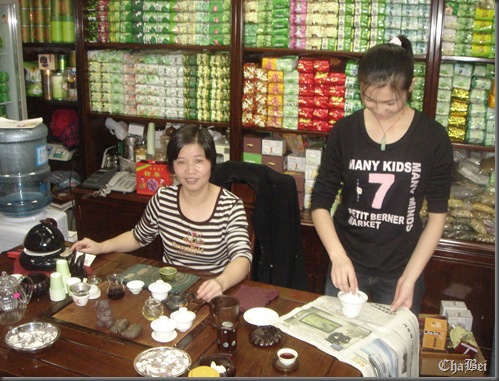
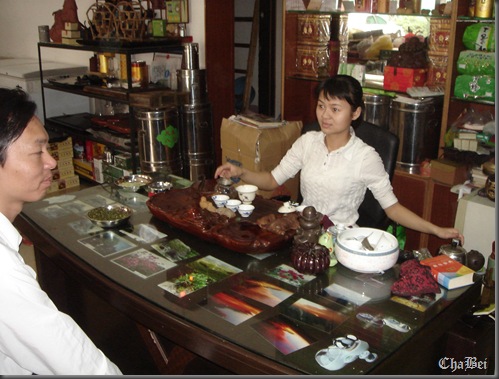 Large Wholesale and Retail shop in Shenzhen. Preparing to serve 4 guests; Niden, Paulo, Dave and me (taking the picture)
Large Wholesale and Retail shop in Shenzhen. Preparing to serve 4 guests; Niden, Paulo, Dave and me (taking the picture)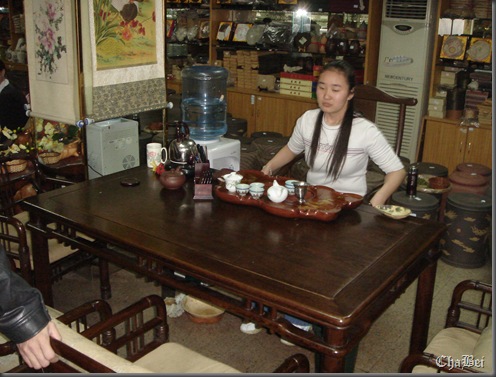
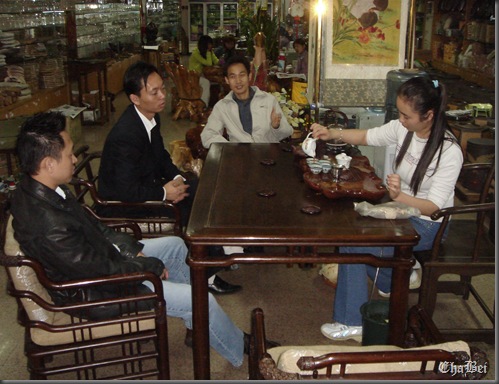 Again, all is set up within easy reach. Note the arrangement of 5 cups in front. Above are tea houses that myself and friends visit. You can see a general theme to the layouts. It is truly fun to watch and participate with skilled practitioners. You will also see a number of small objects around the table .. some for luck .. others to talk about, fiddle with etc. notice some snacks are on offer..
Again, all is set up within easy reach. Note the arrangement of 5 cups in front. Above are tea houses that myself and friends visit. You can see a general theme to the layouts. It is truly fun to watch and participate with skilled practitioners. You will also see a number of small objects around the table .. some for luck .. others to talk about, fiddle with etc. notice some snacks are on offer.. One of my home table set-ups, waste water is feed into a container, housed in the top-center compartment. A mat covers the preparation surface to help diffuse the spent water. Plenty of attractive storage areas.
 Here you can see my Wife's at work .. Robbie is a lefty, note the kettle on the left and the left to right flow. There are two infusions going on, Pu-erh and Jasmine
Here you can see my Wife's at work .. Robbie is a lefty, note the kettle on the left and the left to right flow. There are two infusions going on, Pu-erh and Jasmine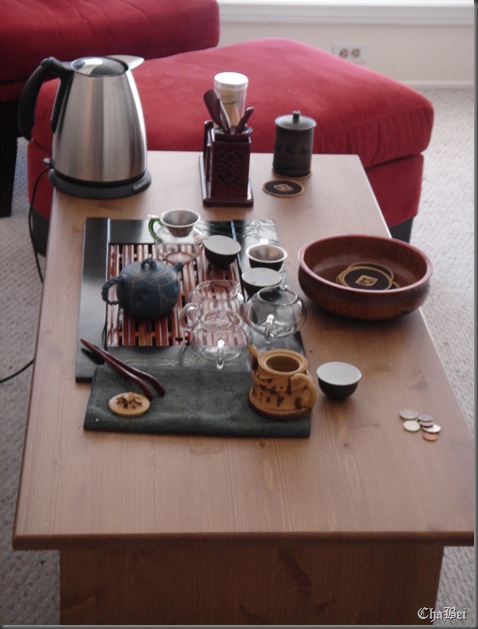
Very basic set-up, tray, tools, cups, serving jug and tea pot. Note arrangement of cups. This can show attention to detail. (More in Part III)
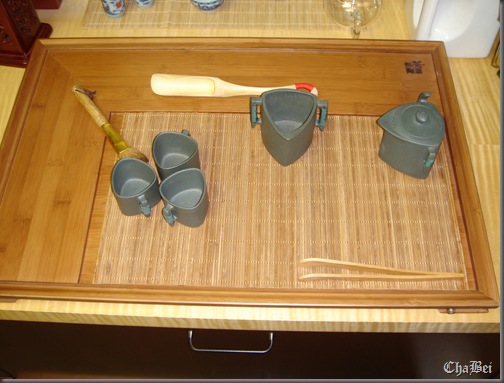 Here is today's working set-up, Yes! you can file waste water in a file drawer. It is nice to have a general use bowl near by (in front of tray) .. used by server and guests for trash etc.
Here is today's working set-up, Yes! you can file waste water in a file drawer. It is nice to have a general use bowl near by (in front of tray) .. used by server and guests for trash etc.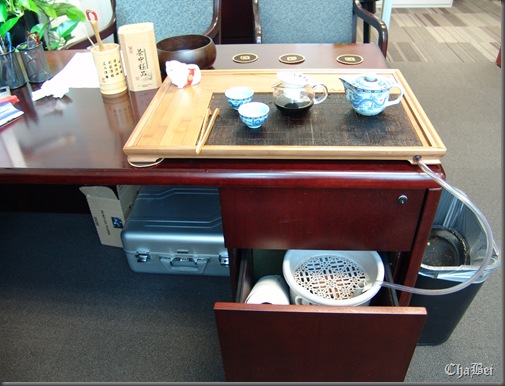
Sometimes you have to improvise .. a lower drawer makes a nice kettle stand!

This should provide an idea on how to get organised .. on to: part III, Practice
Water, the importance of good quality water cannot be over emphasized! At home we pass water through a set of triple cartridge filers, then a reverse osmosis system.
An alternate is to find a brand of bottled water that does not add any negative tastes into the tea. Experiment, you'll find one that works for you. Avoid "Strait from the tap/faucet" When traveling bottled water is the safest bet.
In Mainland China be careful, find a "reputable" source to buy water.
http://www.chinadaily.com.cn/bizchina/2007-07/10/content_5424454.htm
50% fake water coolers By: Hu Yinan (China Daily )Updated: 2007-07-10 09:41
Up to half of water used in Beijings coolers could be fake.
A source with a major supplier made the sensational claim yesterday to the Beijing Times newspaper.
The claim, made by "Liu Xiaoyun", the Beijing sales manager of a well-known bottled water brand, was verified by a number of market competitors. There are more than 200 players in the capital's barreled water market.
The main four - Wahaha, Robust, Nestle and Yanjing -dominate with 25 to 30 million barrels of the total 100 million sold in 2006, Liu said.
"There are now nearly 20,000 water delivery stations in Beijing," Liu was quoted as saying.
"In a conservative estimate, each of the four brands holds on average a monthly sales volume of 1,000 barrels. This makes an annual sales volume of at least 200 million barrels, 100 million of which are counterfeits."
The so-called fake water is either tap water or purified water of miscellaneous small brands, poured into empty barrels sealed with quality standard marks, Liu said. Caps and peels are sold at 1 yuan per set while each quality standard ------
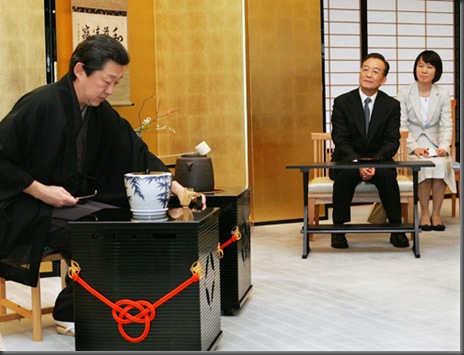
No comments:
Post a Comment